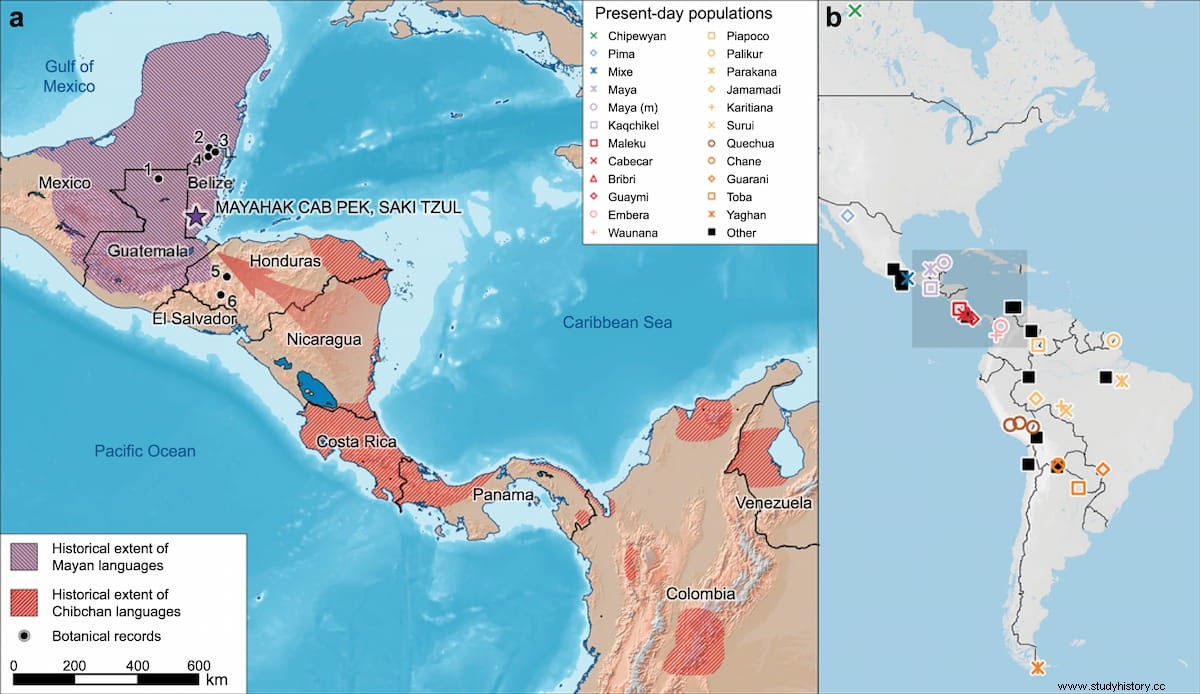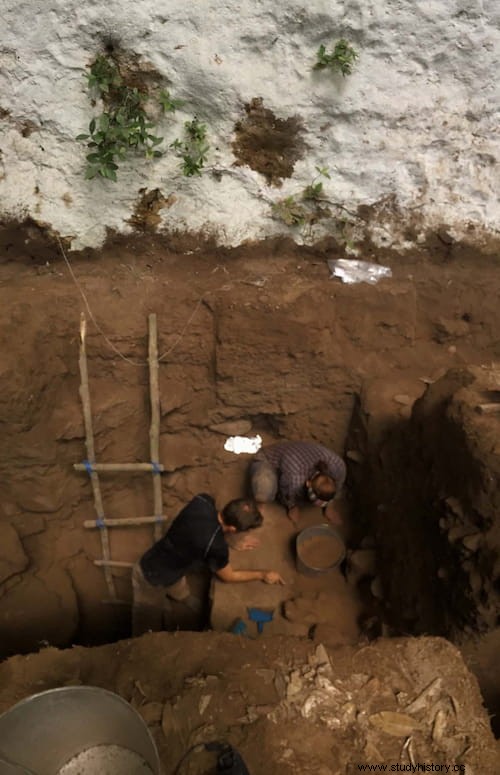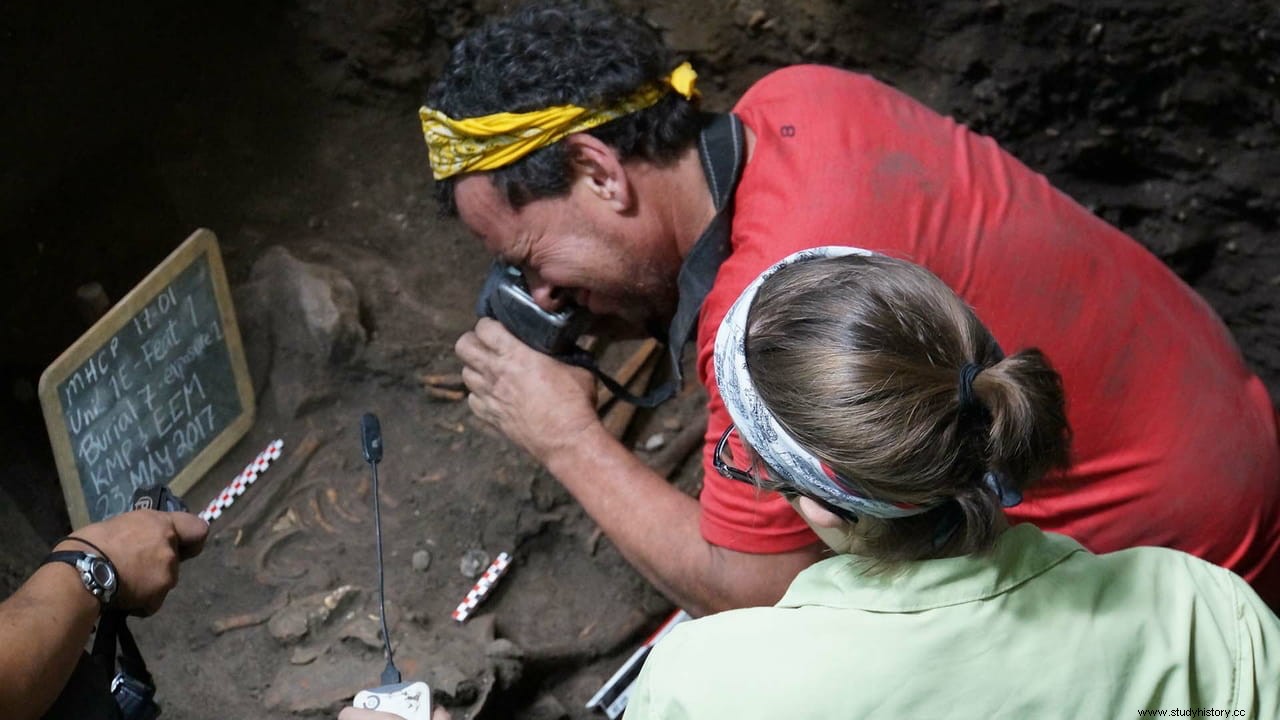New research published this week by University of New Mexico archaeologist Keith Prufer shows that a site in Belize is critical to studying the origins of the ancient Mayan people and the spread of corn as a staple food.
According to the article, published this week in Nature Communications and co-directed by Prufer, excavations in Belize, along with ancient DNA analysis, indicate a hitherto unknown migration of people - carrying maize - from an area of South America north to the Mayan region.
Prufer and his colleagues excavated 25 burials dating from 10,000 to 3,700 years ago in two caves or rock shelters located in the remote Mayan mountains of Belize, Central America. These sites were situated under the overhang of high limestone cliffs that housed the people who lived below and protected the repositories of everyday remains and the burials of the dead for more than 7,000 years.

The skeletons revealed a series of ancient DNA data on the movements of the first populations of the Americas:an early southward migration of people from the north between 9,600 and 7,300 years ago shows only distant kinship with present-day Mesoamericans, including populations Mayan-speaking; then a previously unknown movement from the south beginning about 5,600 years ago had a major demographic impact on the region, contributing more than 50 percent of the ancestry of all subsequent individuals.
According to Prufer, whose lab led the archaeological and isotope research, this new ancestry stems from an ancestral source of present-day Chibchan speakers who live from Costa Rica to Colombia.
The genetic prehistory of human populations in Central America was largely unexplored, leaving a significant gap in our knowledge of the global spread of humans, so this research is truly exciting and groundbreaking , Prufer noted.

Excavations and DNA analysis support a scenario in which horticulturists related to the Chibchan moved north into southeastern Yucatán bringing improved varieties of maize, and possibly also cassava and chili peppers, and mixed with the local populations to create new horticultural traditions that ultimately led to more intensive forms of maize farming much later… .
We see the migration of these people as fundamentally important for the development of agriculture and, eventually, of large Mayan-speaking communities said Prufer, noting that corn provided essential protein and energy from sugar, and could be stored dry. Once people had a reliable food source in corn, they tended to farm and stay in one place, leading to larger, more established communities.
According to Prufer, corn was not always an important part of the diet of these peoples. The earliest migrants probably picked and ate the tiny ears of a grass known as teosinte , as well as the first domesticated corn, although the ears were very small, along with other plants, shellfish, and game. Selecting the biggest and best seeds, they began to domesticate the plant, growing larger ears, and increasingly altering the landscape and biodiversity, a process that probably occurred largely in South America.

Over time, corn consumption grew to become a staple in the diet, much like Europeans used wheat, Prufer said. The spread of maize grew, moving from the south, to the north, to the Mayan population, and eventually across both continents, so that by the time the Spanish arrived around 1500 AD, maize was a staple in the diet. of all Native American groups.
